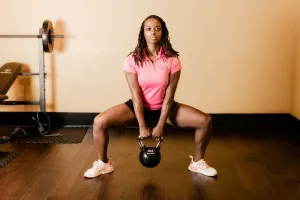When considering whether barefoot running shoes are safe for long distances, it’s worth diving deeper into the biomechanics and potential benefits associated with this type of footwear. Proponents of barefoot running claim that it can help improve running form, strengthen foot muscles, and reduce the risk of certain injuries. However, transitioning gradually to barefoot running shoes is crucial to avoid overuse injuries and allow the feet to adapt to the change in support and cushioning. Running in barefoot shoes encourages a forefoot or midfoot strike pattern, which can help reduce the impact on joints compared to a heel strike. This can lead to a more efficient running gait and potentially lower the risk of injuries such as shin splints or stress fractures. Additionally, barefoot running shoes typically have minimal cushioning and support, allowing for more natural and unrestricted foot movement. When the foot lands closer to the body’s center of mass, it can improve running efficiency and decrease the risk of overstriding, commonly associated with heel striking.
The Science Behind Barefoot Running
Biomechanical Shifts
One of the most significant changes when switching to barefoot shoes is the alteration in your running biomechanics. Traditional running shoes often promote a heel strike due to their thick cushioning, which can lead to increased stress on the knees. Barefoot shoes, however, encourage landing on the midfoot or forefoot, reducing the impact force. A study published in the Journal of Sports Sciences found that runners using a forefoot strike pattern experienced lower rates of certain injuries compared to heel strikers.
Muscle Engagement
Barefoot running shoes engage different muscles compared to traditional shoes. The intrinsic muscles of the foot, which are often underutilized in cushioned footwear, are activated more in barefoot running. This activation can lead to improved muscle strength and coordination over time. Consider incorporating exercises like toe curls and arch lifts into your routine to prepare these muscles for the increased workload.
Transitioning to Barefoot Running Shoes
Gradual Adaptation
It’s essential to gradually transition to barefoot running shoes to avoid overloading the feet and lower limbs. Start by incorporating short distances in barefoot shoes and gradually increase the mileage over several weeks or months. For instance, begin with just 10% of your usual running distance in barefoot shoes and increase by 10% each week. This method helps prevent injuries like plantar fasciitis or Achilles tendonitis, which can occur if the transition is too abrupt.
Strengthening Exercises
Strengthening exercises for the feet and lower legs can help prepare the muscles for the increased workload associated with barefoot running. Exercises such as calf raises, foot doming, and towel scrunches can build the necessary strength. Incorporating balance exercises, like standing on one foot or using a balance board, can also enhance proprioception and stability.
Developing a Training Schedule
Create a structured training schedule that incorporates barefoot running gradually. A sample week might include two days of short barefoot runs interspersed with traditional running. As weeks progress, increase the frequency and distance of barefoot sessions, always mindful of any discomfort.
Considerations for Long-Distance Running
Individual Variability
While some runners may find barefoot shoes comfortable for long distances, it’s not suitable for everyone. Factors such as foot strength, running mechanics, and running surface can all impact the safety and effectiveness of barefoot running for long distances. For instance, running on softer trails may be more forgiving than harder surfaces like asphalt or concrete.
Listening to Your Body
Pay close attention to any signs of discomfort or pain. It’s crucial to listen to your body and consult with a healthcare professional or running coach if needed. Long-distance barefoot running requires a well-conditioned body, particularly the feet and lower limbs, to withstand the increased stresses and impacts associated with running without traditional cushioning and support.
Environmental and Surface Considerations
Evaluate the terrain you’ll be running on. Grass, dirt, and trails are more forgiving and ideal for beginners transitioning to barefoot running. Conversely, urban environments with concrete and asphalt require more caution due to the increased impact forces.
Real-Life Examples and Success Stories
Case Study: John’s Transition
Take John, a seasoned marathoner who decided to switch to barefoot running shoes. He started by wearing the shoes during his warm-ups and cooldowns. Over six months, he gradually increased his barefoot mileage, focusing on maintaining proper form. John reported fewer knee issues and improved his marathon time by five minutes. His success was largely due to a patient transition and consistent strength training.
Case Study: Lisa’s Journey
Lisa, a recreational runner, initially struggled with shin splints. After consulting with a coach, she began transitioning to barefoot shoes, starting with short runs on a local grass field. Six months in, her shin splints disappeared, and she developed a newfound love for trail running. Lisa’s story highlights the importance of surface choice and gradual adaptation.
Common Mistakes to Avoid
- Rushing the Transition: One of the most common mistakes is transitioning too quickly, which can lead to injuries.
- Neglecting Strength Training: Skipping foot and leg strengthening exercises can increase injury risk.
- Ignoring Pain: Never push through persistent pain. It’s a signal that the body needs more time to adjust.
- Inappropriate Surface Choices: Starting on hard surfaces can exacerbate injuries during the transition period.
Practical Tips for Barefoot Running
- Choose the Right Surface: Start on softer surfaces like grass or dirt trails.
- Focus on Form: Keep strides short and land gently on the forefoot or midfoot.
- Stay Consistent: Regular practice is key to adapting to the new running style.
- Monitor Your Progress: Keep a journal of your runs to track improvements and any discomfort experienced.
- Foot Care: Maintain proper foot hygiene and care, as barefoot running increases exposure to elements.
The Role of Footwear Technology
Minimalist vs. Traditional Shoes
Minimalist shoes mimic barefoot conditions while offering some protection. They’re designed to promote natural foot movement, which can be beneficial for strengthening foot muscles. However, they lack the cushioning and support of traditional shoes, so they may not suit everyone, particularly those with existing foot conditions.
Innovations in Design
Recent advancements in barefoot shoe technology have focused on improving durability and comfort without sacrificing the barefoot experience. Some brands have introduced features like flexible soles and breathable materials to enhance the running experience.
Customization Options
Some manufacturers offer customization options for barefoot shoes, allowing runners to select features tailored to their specific needs, such as arch support or specific sole thickness. This can be especially beneficial for addressing individual biomechanical requirements.
Future of Barefoot Running
Trends and Research
The trend toward natural running continues to grow, with more runners experimenting with minimalist footwear. Ongoing research aims to better understand the long-term effects of barefoot running on performance and injury prevention. As more data becomes available, the running community will gain clearer insights into optimizing barefoot running techniques.
Community and Resources
Engage with the barefoot running community through forums, workshops, and events. Connecting with experienced barefoot runners can provide valuable insights and support during the transition. Many online platforms offer resources and guidance tailored to barefoot running enthusiasts.
Educational Workshops
Look for workshops or seminars on barefoot running techniques. These educational opportunities often provide hands-on instruction and personalized feedback to help runners make a successful transition.
Embracing the natural foot movement and muscle engagement that barefoot shoes offer can potentially improve running performance and reduce the risk of certain injuries. However, individual differences in biomechanics and training history should be considered when deciding whether to incorporate barefoot running into your long-distance training regimen. Careful consideration of your running mechanics and gradual adaptation are key to reaping the benefits of barefoot running while minimizing the risk of injuries or discomfort.



